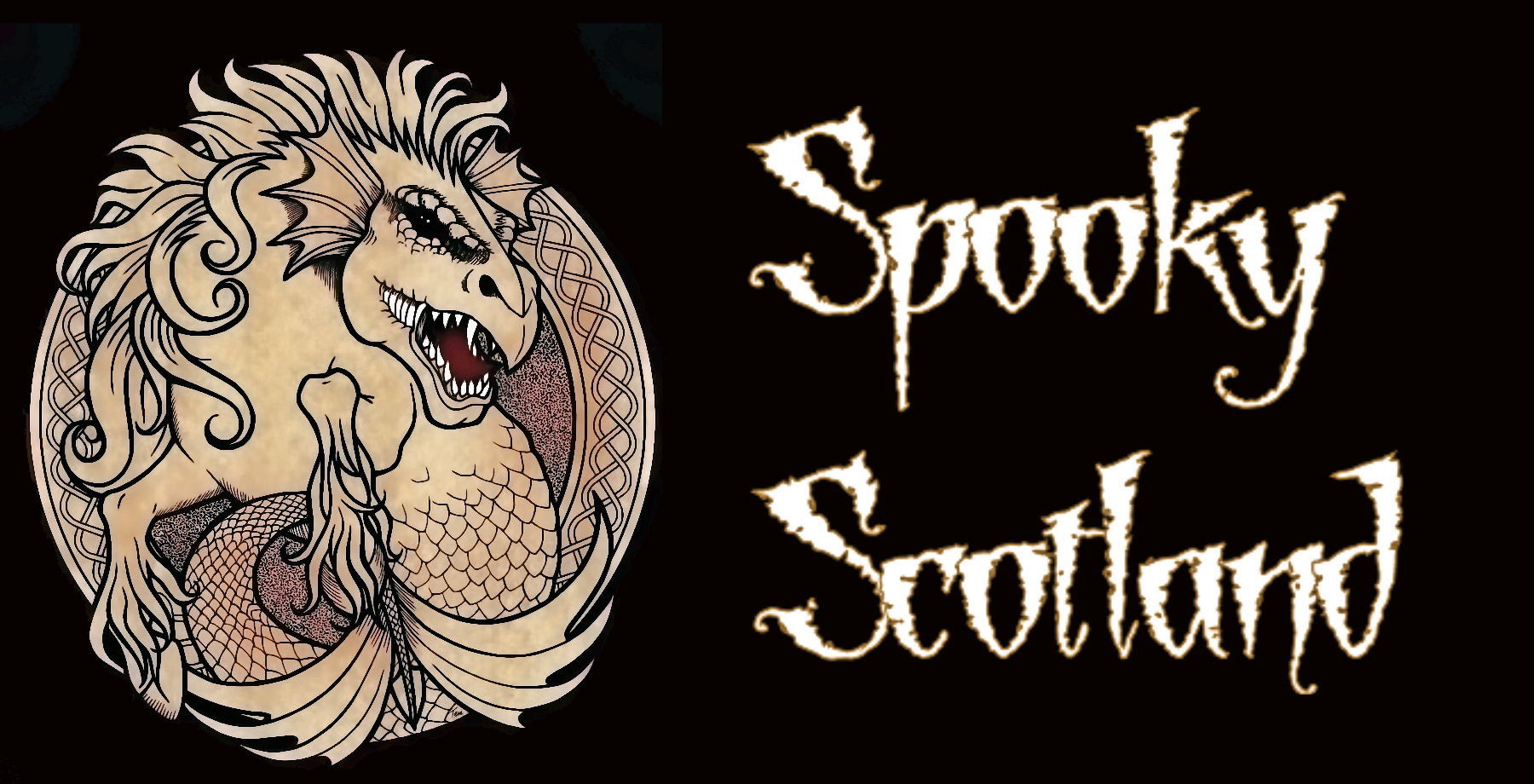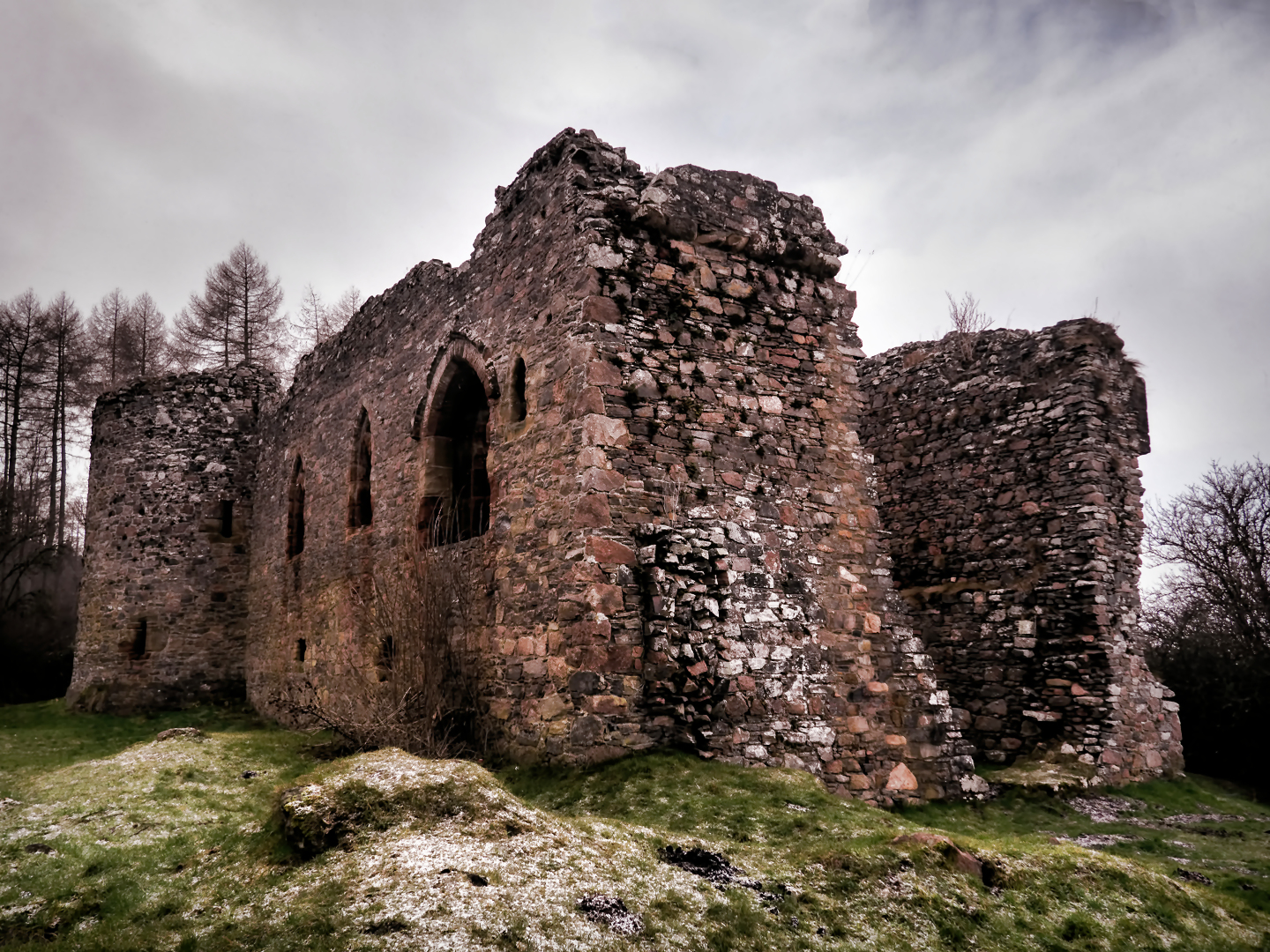When it comes to dark history, Rait Castle has it all: a tale of forbidden love, two feuding families, a banquet treacherously planned with murder in mind, a betrayal, a massacre and a ghost known as the ‘Wraith of Rait’. The ruined remains of this 14th Century building are a fine example of a Hall House, although it is not the most easily accessible by the public. It is found at the end of a farm road and has limited parking. It was built by the Cumming Family on the site of a manor house which had once belonged to Clan MacIntosh. The lands had been unscrupulously acquired, a fact that the MacIntoshes were loath to forget. The resulting feud culminated in a massacre within the Castle Hall.
Rait and the MacIntoshes
The lands of Rait were granted to the first chief of Clan MacIntosh, Shaw MacIntosh by William I (the Lion) in a charter dated 1165. Shaw was the second son of Duncan MacDuff, Earl of Fife of the royal house of Dál Raita. In 116O Shaw MacDuff accompanied King Duncan IV on an expedition to suppress a rebellion in Moray. He was amply rewarded, being made Constable of Inverness Castle and being granted lands in the Findhorn Valley including Rait. The heartlands of Clan MacIntosh centred around the Nairnshire hamlet of Petty which was also to become the burial place of the Clan Chiefs.
In 1263, Ferquhar MacIntosh, the fifth chief led his clan at the Battle of Largs against the army of Hakaan IV of Norway. It was an indecisive battle but one that ultimately was to break the Viking stranglehold over the Hebrides. However, two years later Ferquhar was killed in a duel, leaving his infant son Angus as his heir. The Cummings had a reputation for being opportunists and they grabbed the opportunity to seize the lands for themselves.
Rait Castle and the Cummings
The Cummings or Comyns were major players in 13th Century Scotland. Like many of the families whose rise to power began under the reign of King David I, the Cummings were a family of Norman descent. King David wanted to extent his influence south into the north of England and tried to have his own man installed as Bishop of Durham. It just so happened that William Cumming was also the Lord Chancellor of Scotland. When King David withdrew his support, William forged a letter from the Pope in an attempt to be consecrated, an act which would later get him excommunicated. However, his nephew was rewarded with lands in Scotland. The Cummings’ fortune turned when Richard’s son William married Marjory, daughter of the Maormer of Buchan and succeeded his father-in-law as Earl of Buchan. They then, made a series of advantageous marriages, marrying into the highest-ranking families of Scottish Nobility. The Cummings were on the rise. At the height of their power, the Cummings could boast four Earls, the Lordship of Badenoch (a mighty protectorate) and thirty belted knights with lands far and wide.
The Cummings took control of Rait, Meikle Geddes and other lands belonging to the MacIntoshes. In Norman fashion they dropped their surname and simply went by the name of Rait. Gervaise de Rait built the existing castle as a replacement to the old manor house. His son Andrew took the side of King Edward I of England against Robert the Bruce when the Scottish Wars of Indepence broke out. The war was the undoing of the Cumming clan. An argument between Robert Bruce and John Cumming, otherwise known as the Red Comyn, left the head of the Cumming family stabbed to death in Greyfriars Church in Dumfries. From that point on, the Cumming Clan had little choice but cast their lot in with Edward’s faction. Once the Scots gained their independence, the Cummings found themselves stripped of much of their lands and titles. Sir Andrew de Rait had been the constable of Nairn Castle, an office which now fell into the hands of the Cawdors of Cawdor. However, the de Raits were allowed to keep their lands much to the chagrin of the MacIntoshes. The MacIntoshes were staunch Bruce supporters and they petitioned the king to get back the lands which were rightfully theirs. Their petition was unsuccessful but the MacIntoshes had long memories and a feud rumbled away between the two clans.
Treachery at Rait
In 1442 Cumming of Rait hatched a cunning plan. Under the guise of a desire to bury former animosities and to establish friendly relations with his rivals, Rait invited the chief of Clan MacIntosh and his followers to a great banquet at Rait. Unsuspecting, the MacIntoshes accepted the invitation and prepared to attend. Meanwhile Cumming had put his household under an oath not to reveal the plot to any person. However, he did not count on his daughter who had fallen in love with a MacIntosh.
The lovers’ trysting place was a large boulder some distance from the Castle, which to this day is called ‘The Stone of the Maiden.’ Determined not to break the oath she had made to her father and yet still be able to forewarn her lover, she told the stone the plot which her father had concocted, knowing that her lover was hiding behind it. She told the stone that at a given signal each Cumming would arise and slay his defenceless guest.
Notwithstanding the warning, the MacIntoshes resolved to attend the feast. As the old adage goes, to be forewarned is to be forearmed, and in the case of the MacIntoshes, this meant hiding a dirk in the depths of their plaids. At the festive table revelry ran high, wine flowed freely and great hall echoed with the mirthful shouts of the carousers. At last the signal come in the form of a toast to ‘The Memory of the Dead’, the Cummings rose to their feet and were about to draw their swords only to find the cold steel of a MacIntosh dagger being plunged into their hearts.
The chief of the Cummings was amongst the few who escaped alive. Enraged, he flew to his daughter’s chamber, suspecting that she was the informant who had betrayed his plans. The hapless lass took the only escape route available to her, the window. Alas, as she clung to the window ledge her father pulled out his broad sword and chopped off her hands. The girl plunged to her death.
The ghost of a handless woman in a blood-drenched white dress is said to haunt Rait to this day. Thus, ended the line of the Cummings of Rait. The MacIntoshes did not claim possession of the lands and the castle fell into the hands of the neighbouring Cawdor family. With the exception wraith of the young maiden, the castle has remained tenantless ever since and the building has been left to decay.




